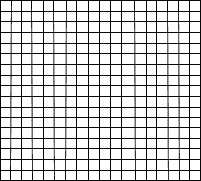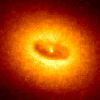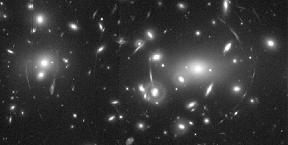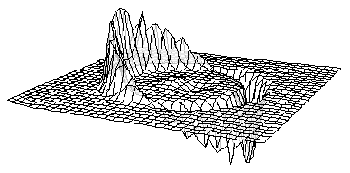Friday, 22 October 1999

Movers

Surfing a Warp
BubbleSince 1993, the Mexican-born physicist, Miguel Alcubierre,
had set about solving for solutions to Einstein's equations. The usual
constraints hold. No ship can exceed the speed limit, particularly
lightspeed. The ship's passengers should also not feel any abrupt jolts or
find that onboard clocks begin to misbehave.
Since Einstein first developed general relativity--particularly the
idea that mass itself can distort space and time--a number of exotic
solutions and paradoxes have arisen. Arranging the stars themselves in
just the right pattern often produces unusual--if not highly
realizable--special effects. But since Alcubierre published his results in
an article entitled, "The warp drive: hyper-fast travel within general
relativity," the physicists are getting better at this stellar chess
game.
If chess were played, say, on a sheet of rubber matting,
with the moves possible for all chesspieces changing as the rubber sheet
itself warped under a knight's or king's weight, one might get a sense of
the challenges presented just to understand the rules of the
game.
To understand clearly the proposition, the Alcubierre warp
drive rides a bubble on space time itself, a ripple built up by pulling in
regions in front and expelling them in back--a kind of 'push-me, pull-me'
approach to interstellar travel.
The novelty is supraluminal travel becomes possible with
an added bonus: the passengers would remain relatively unaware of the
massive accelerations going on around them. Their bubble moves with them
and defines all internal rules to its own captain's logs and
stardates.
| Right: A
Possible View from Above. Space-time expands behind and
contracts in front, which becomes a mathematical wave on space-time
itself, a warp bubble. Highly unrealizable, or as physicists might
understate as 'non-trivial', the consequences of this warp bubble
allow unusual solutions. One such solution is this 'push-me,
pull-me' approach to space travel. The energetic costs can be
suboptimal, even if just the proper conditions seem
arrangeable. |
 |
But as Dr. Chris Van Den Broeck says in his follow-on
warp-drive paper in the journal, General Relativity and Quantum
Cosmology: "This does not mean that the proposal is realistic."
Whether such solutions as published by Alcubierre (and now
refined by Van Den Broeck) build on themselves could actually hinge more
on astronomy, not engineering, and how over time, like the mathematics of
black holes and wormholes themselves, keen observers start looking for
what previously could neither be imagined nor predicted.
 |
|
 Above: As
imaged by the Hubble Telescope, this ring structure found in
galaxy NGC 4261, is suspected to originate from a core with
super-massive gravitational pull on its surrounding cool gas.
Photo credit: HST/Hubble Space Telescope Institute Above: As
imaged by the Hubble Telescope, this ring structure found in
galaxy NGC 4261, is suspected to originate from a core with
super-massive gravitational pull on its surrounding cool gas.
Photo credit: HST/Hubble Space Telescope Institute
Left:Super-Massive Stellar
Distortions of Space
Time | |
| To see a kind of proposed natural
counterpart to the warp-drive concept, almost all of the bright
objects in this Hubble Space Telescope image shown
below are galaxies in the cluster known as Abell 2218. The cluster
is so massive and so compact that its gravity bends and focuses the
light from galaxies that lie behind it. As a result, multiple images
of these background galaxies are distorted into faint stretched out
arcs - a simple lensing effect analogous to viewing distant street
lamps through a glass of wine. The Abell 2218 cluster itself is
about 3 billion light-years away in the northern constellation
Draco |
 |
Whether these proposals occupy more than physicists and
astronomers however is far from being determined: many impossible or
otherwise exotic kinds of matter are needed to put a wrinkle in
space-time.
But as scientists study the conditions for fast transits,
the next generation of star-watchers will have to become even more
imaginative. For example, the often depicted view of blurring or
distorting zoom motions shown to accompany faster-than-light travel is not
consistent with known physics. Since lightspeed is constant, independent
of the observer, faster-than-light travellers would not get the
opportunity to see any zoom forward from their view. The light would
neither speed up nor hit the observer's retina with any such apparent
velocity boost.
In this
thread

Published
physics
M. Alcubierre, "The warp drive: hyper-fast travel
within general relativity," Class. and Quantum Grav., vol. 11, p.
L73 (1994)
Ken Olum, (1998),"Superluminal Travel
Requires Negative Energies", Physical Review Letters,81,
3567-3570
Morris, M., and Thorne, K.S. (1988) "Wormholes in
spacetime and their use for interstellar travel: A tool for teaching
general relativity", Am. J. Phys., Vol. 56, No. 5, pp. 395-412.
Alıntı: Source ©
Ana Sayfa /index /Roket bilimi / E-Mail /CetinBAL / Quantum Teleportation-2
E-Mail /CetinBAL / Quantum Teleportation-2
Time Travel Technology /Ziyaretçi
Defteri /UFO Technology
/ Duyuru
|


